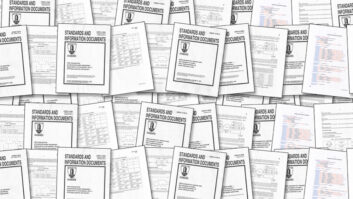
When it comes to the question of who carries the responsibility of properly archiving masters—the engineer, the label or the artist—does it become a technical, a financial or a legal matter?
The answer, according to the “Archive This! How Mastering Engineers Have Become Default Guardians of Audio Assets” panel at AES on Thursday, is all three.
Michael Graves of Osiris Studio, Andreas Meyer of Swan Studios NYC and Meyer Media, and Cheryl Pawelski of Omnivore Records discussed the unique balancing act that mastering engineers encounter when it comes to archiving and restoring assets.
It’s a conundrum that has faced the industry since the beginning of recorded music’s time, noted Andreas, and there are no easy answers. If anything, as technology has advanced and assets have evolved into digital form, the challenges have grown. Digital storage carries its own set of challenges, including how and where to store it—with multiple levels of local storage recommended, as well as cloud.
Even the level of detail required for proper archiving can be up for debate. While all agreed that starting the documentation process accurately from the very beginning is always best, whether you need to record the name of the guy who ran out for coffee is another question. (Meyer says yes; Pawelski says no.) The value of the client can also play a role, with a high-value client potentially warranting analog backup.
All of this raises the question, Is this really the mastering engineer’s responsibility?
To be sure, it’s a gray area, one that is further muddied when an artist (or a label) phones and asks the engineer if he or she still has the masters or the additional session material. While the engineer may not even be legally permitted to house the assets, this issue is often overlooked aside in the client’s extreme desire to obtain their work.
Which brings us to the next issue: How should an engineer charge for these services? Should archiving and restoration become a line item on their bill? If so, should it be charged by project? A subscription fee? Something else?
While no final answers were found during the panel, one thing remains certain: Proper planning by all involved is key, and beginning the process as early (and as accurately) as possible is paramount.







